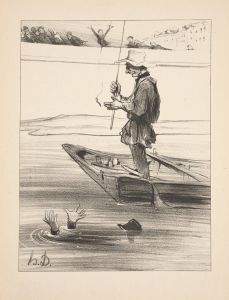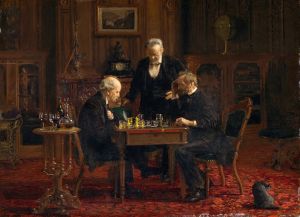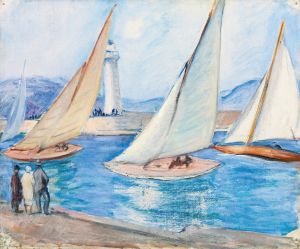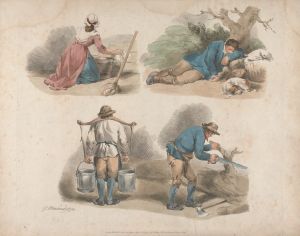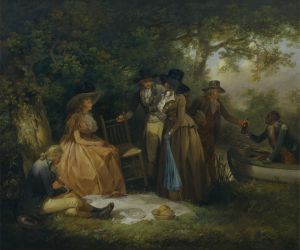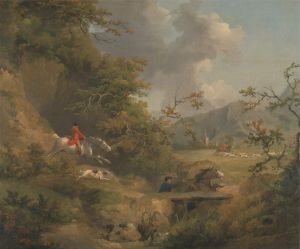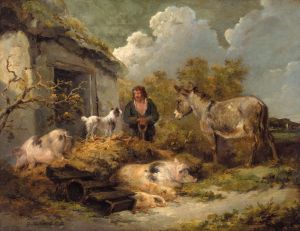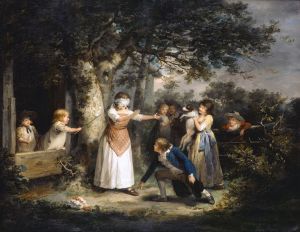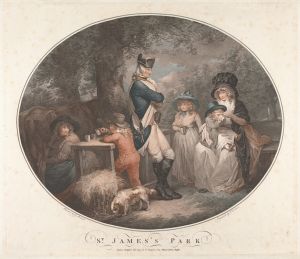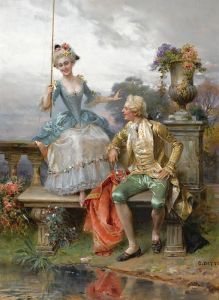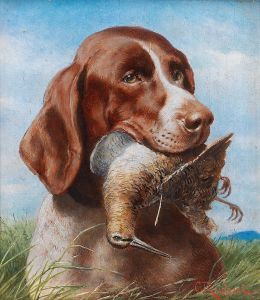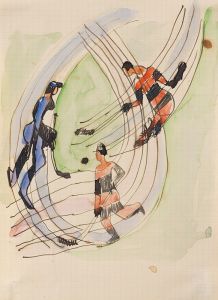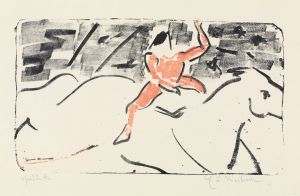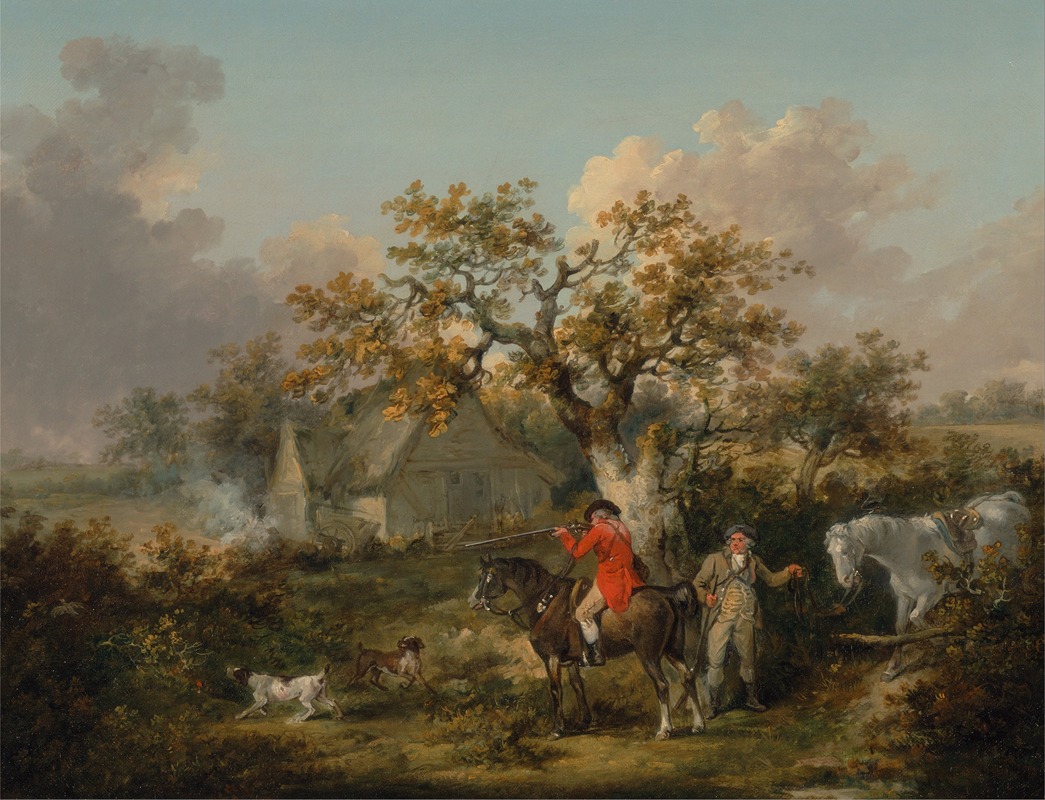
Partridge Shooting
A hand-painted replica of George Morland’s masterpiece Partridge Shooting, meticulously crafted by professional artists to capture the true essence of the original. Each piece is created with museum-quality canvas and rare mineral pigments, carefully painted by experienced artists with delicate brushstrokes and rich, layered colors to perfectly recreate the texture of the original artwork. Unlike machine-printed reproductions, this hand-painted version brings the painting to life, infused with the artist’s emotions and skill in every stroke. Whether for personal collection or home decoration, it instantly elevates the artistic atmosphere of any space.
George Morland was an English painter known for his rustic and rural scenes, often depicting the countryside and the lives of common people during the late 18th and early 19th centuries. One of his works, "Partridge Shooting," exemplifies his skill in capturing the essence of rural life and the outdoor activities that were popular during his time.
"Partridge Shooting" is a painting that reflects Morland's interest in sporting scenes, a genre that was gaining popularity in England during the late 1700s. This painting, like many of Morland's works, is characterized by its attention to detail and the ability to convey a narrative through imagery. Morland was known for his ability to depict animals and landscapes with a sense of realism and vitality, which is evident in this work.
The painting likely portrays a typical hunting scene, a common pastime among the English gentry and rural folk. Partridge shooting, in particular, was a favored activity, as partridges were abundant in the English countryside. The painting would typically feature hunters, possibly accompanied by dogs, engaged in the act of shooting or preparing for the hunt. Morland's ability to capture the dynamic interaction between humans, animals, and the landscape is a hallmark of his style.
George Morland was born in London in 1763 into a family of artists. His father, Henry Robert Morland, was also a painter and engraver, which provided George with an early exposure to the art world. Morland showed prodigious talent from a young age and was apprenticed to his father, where he honed his skills in drawing and painting. By the age of ten, he was already exhibiting his works.
Throughout his career, Morland was prolific, producing a vast number of paintings, drawings, and engravings. His works were highly sought after, and he enjoyed considerable success during his lifetime. However, Morland's personal life was tumultuous, marked by financial difficulties and struggles with alcoholism, which eventually affected his career and health.
Despite these challenges, Morland's contribution to English art is significant. His works provide a window into the rural life of his time, capturing the simplicity and beauty of the countryside. "Partridge Shooting," like many of his paintings, reflects his keen observation of nature and his ability to depict it with authenticity and charm.
Morland's paintings are appreciated for their narrative quality and the way they convey the social and cultural aspects of 18th-century England. His ability to depict scenes with warmth and realism has earned him a lasting place in the history of British art. Today, his works are held in various collections, including museums and galleries, where they continue to be admired for their artistic merit and historical significance.
In summary, "Partridge Shooting" by George Morland is a testament to the artist's skill in capturing the essence of rural and sporting life in 18th-century England. Through his detailed and lively depictions, Morland offers a glimpse into the past, preserving the cultural heritage of his time for future generations to appreciate.





